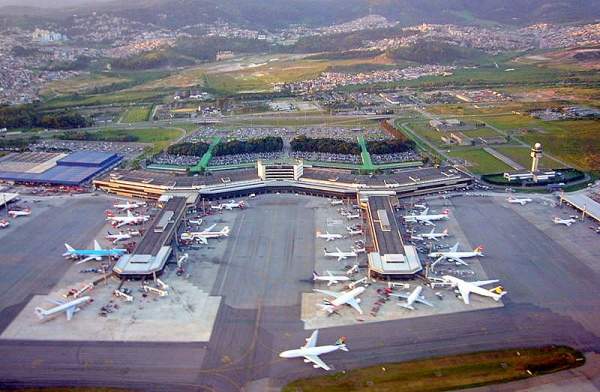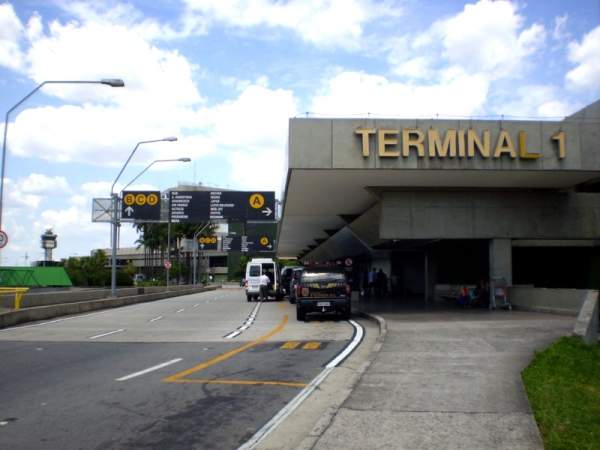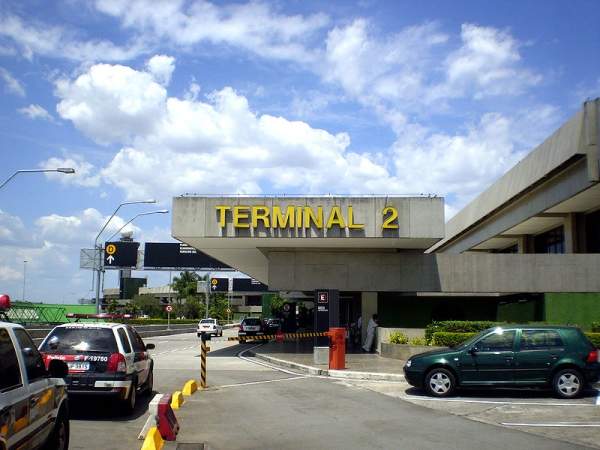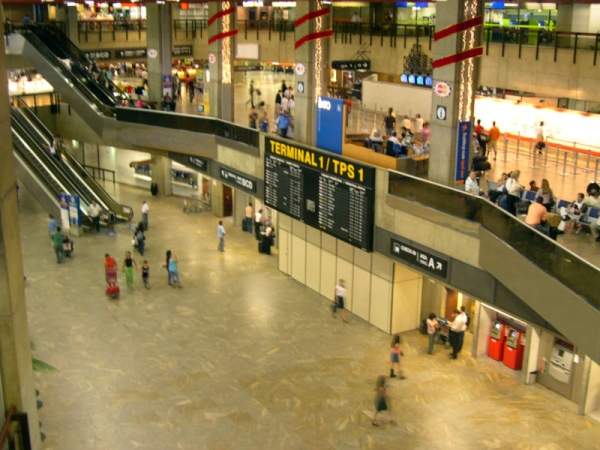São Paulo-Guarulhos International Airport, formerly known as Cumbica Airport, is one of the largest airports in Brazil. Spread over an area of 13,774km², the airport is located near the city of Guarulhos in São Paulo state. It was officially opened in 1985 and is operated by Infraero.
The airport serves more than 26 million passengers, and records more than 250,000 aircraft movements annually. It handles roughly 380,000mt of cargo every year.
Terminal features and expansions
The airport has three passenger terminals. Terminal one (TPS1) is spread over 87,850m2 and terminal two (TPS2) 91,940m2. The airport has more than 350 check-in counters. Terminal one has two wings A and B, while terminal two has wings C and D.
The terminals feature ATMs, banks with bureau de change facilities, first aid facilities, internet access, facilities such as ramped access and lifts for disabled people. The terminals also include duty-free shops and restaurants. The airport has five cargo terminals.
The first common use self-service (CUSS) kiosks in Brazil were introduced at the São Paulo-Guarulhos airport in September 2009. The kiosks enable quick check-ins. The contract to install CUSS kiosks was awarded to SITA.
The third passenger terminal (TPS3) was commissioned in May 2014 in the run-up to the FIFA World Cup 2014. The terminal handles up to 12 million passengers per year during its first phase of operations and consists of 20 aerobridges and two aprons with 34 aircraft stands. The 192,000m2 terminal features 90 check-in counters arranged in three islands of 30 desks each.
The terminal is expected to handle 25% of the airport’s international traffuc during the 2014 FIFA World Cup. MAG Consortium, which includes Biselli + Katchborian archtects, PJJ Malucelli Achitecture and Andrade Rezende Engineering provided the design for the new terminal.
Maintenance facilities and ground transportation
The ground handling services at the airport are provided by Lider Aviacao, Swissport Executive Aviation and Universal aviation.
The airport is facilitated with a bonded warehouse, air-conditioned storage, refrigerated storage and deep freeze storage. It also has mechanical handling and X-ray equipment.
The airport has two parallel runways running east to west which are paved with asphalt. The first runway (09R/27L) is 3,000m long and the second runway (09L/27R) is 3,700m.
The bus service from the airport to the city centre is provided by an Airport Bus Service administered by Sao Paulo metropolitan service EMTU. Shuttle mini bus services and taxis are also run between the airport and the city centre.
The parking lot at the airport has more than 3,098 slots. Both short and long-term parking spaces are located outside the terminals.
Controversies
In January 1986, a Boeing 737-2A1 flight collided with a dyke and broke in to two, when it was taking-off from a taxiway at the airport. One passenger died in the incident.
In March 1989, a Boeing 707-349C cargo flight belonging to Transbrasil crashed before touching down at the runway.
The flight crashed into a residential area killing 22 people on the ground and three crew members onboard. In September 2002, an ATR42-312 cargo flight crashed near Paranapanema. Two crew members died in the incident.






